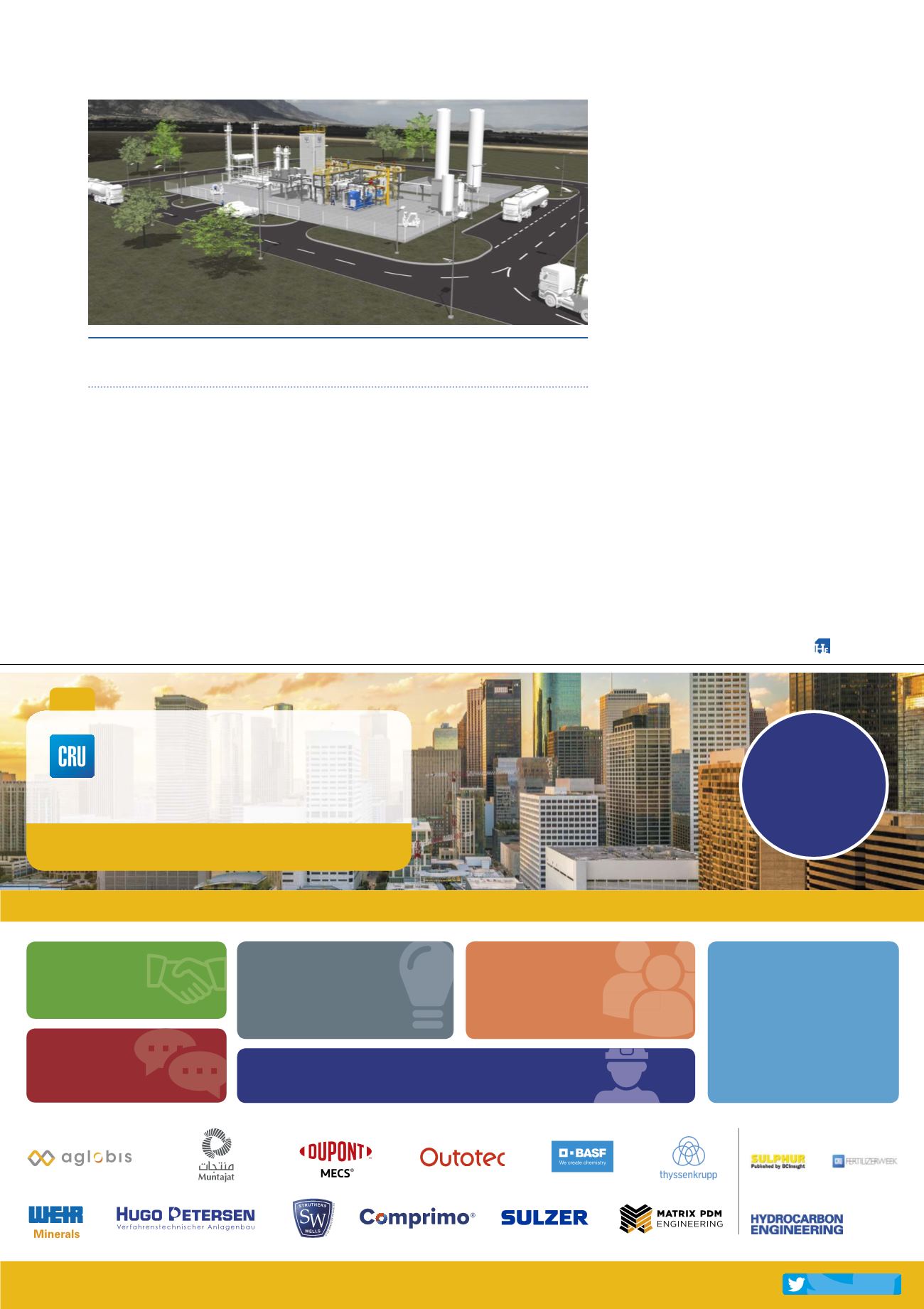
develop alternatives to petrol and diesel. This re-orientation
is being further accelerated by legislation such as the
Bundesfernstrassenmautgesetz (BFStrMG, Act on Toll
Collection on Federal Trunk Roads), which was adopted by
the German Bundestag in October 2018. The law exempts
lorries running on LNG from the obligation to pay tolls and
thereby creates considerable cost-saving potential for the
logistics sector. As a result, major automakers have already
seen a significant rise in orders for LNG-fuelled lorries.
Another key factor is CO
2
emissions. It is safe to assume
that the trend towards natural gas propulsion will gain
further momentum once mandatory emissions limits are
introduced across the board. Several pioneering projects in
the small scale LNG segment for road
traffic are in the pipeline. Thus far, the
focus has been on liquefying network
gas and on distributing it via a network
of filling stations. A similar
development is currently emerging in
shipping: the emissions from ferries
and cruise ships during their stay in
port are increasingly being restricted, a
fact encouraging operators to
reconsider the fuels they are using in
favour of cleaner energy sources such
as LNG. In Northern Europe, a number
of pilot projects in which LNG is used
as marine fuel for ferries have been
successfully implemented.
Conclusion
Alternative fuels such as LNG offer a promising technological
basis for reducing the dependency on oil where mobility and
transport are concerned, while concomitantly reducing
greenhouse gas emissions. Natural gas is one of the most
promising alternative fuels for transport by land and by sea.
The technology is mature, readily available, and just as powerful
as petrol or diesel, but emits fewer pollutants. In addition, the
transport of LNG can be organised more flexibly. With the
right technological and strategic approach, it is now even
possible to produce LNG locally, wherever the fuel is actually
needed. In the future, this could offer the possibility to
decentralise the energy supply in many regions at low cost.
Figure 3.
Typical layout of a small scale liquefaction plant including an LNG
fuelling station.
For more information or to book your place, visit
www.sulphurconference.com#CRUsulphur
Understand the big picture commercial and technical scenarios impacting the sulphur and sulphuric acid industries
Sulphur 2019
Oil | Gas | Fertilizers | Metallurgy | Industrial
4-7 November, 2019
Hilton Americas, Houston, Texas, USA
35
th
+ Sulphuric Acid
SPECIAL OFFER
FOR HYDROCARBON
ENGINEERING
READERS
SAVE 10%
USE CODE
HYDROENG10
9+ HOURS
of accredited
technical training
hours and a
certificate
of attendance
450+
delegates
50+
presenters
70+
exhibitors and
technical experts
Operators pay just $650
Apply online
14+
hours of networking
opportunities
Official publications:
Sponsors:
Supporting publication:








